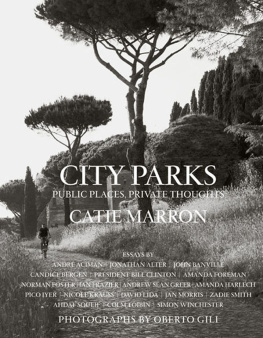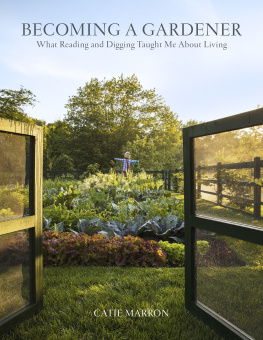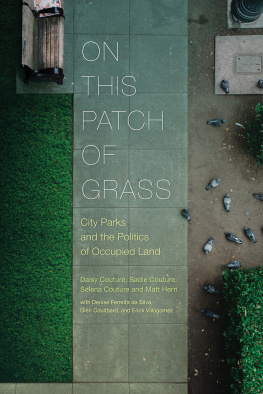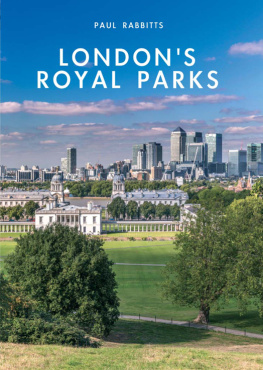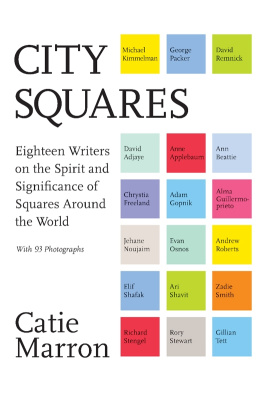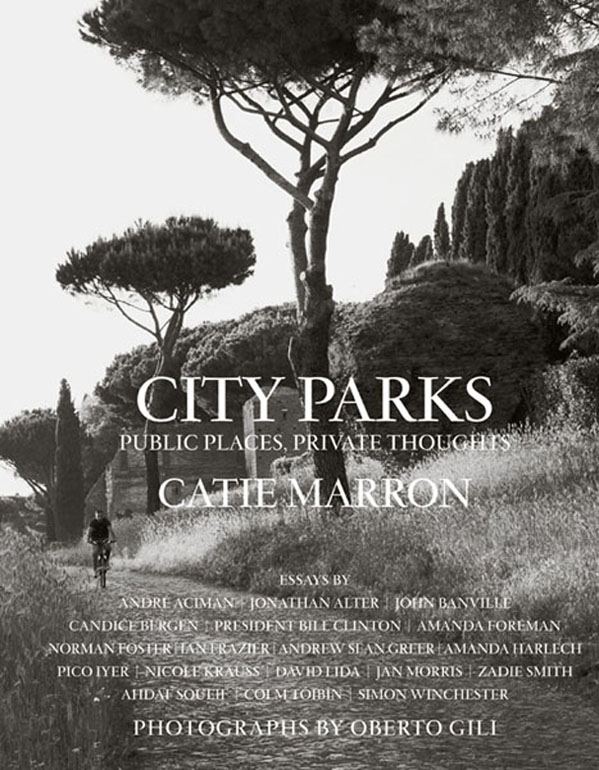TO MY FAMILYDON, WILLIAM, AND SERENA
CONTENTS



LIKE SO MANY ADVENTURES , this book started with a trip to Paris. I was twenty-three, and went there for the first time with a friend between the Christmas and New Year holidays. I remember the vibrant, white winter light, the small hotel on the Rue de Rivoli where we stayed, and our huge splurge on lunch at the old world restaurant Le Grand Vfour. And of course, walking a lot.
The clearest memory of all, the one that is etched in my mind as bright as the winter light, while all the others have dimmed, is my first visit to the Luxembourg Gardens. It was on a brisk, sunny morning, and a surprising number of people were out, most of them gathered around the boat basin, soaking up the warm sun. As I watched the scene before me, tears came to my eyes. Something about the contrast between the formal, beautiful setting and its natural, everyday humanity moved me deeply.
Each time Ive visited Paris since then, Ive made a pilgrimage to the Gardens. Even, if need be, as happened twice, I had to stop en route to the airport. Ive grown up with this park. I used to go alone, then with my husband, and together we introduced our children to the parks grounds.
My favorite memories with them are of watching or pushing handcrafted model boats around the pond where Id sat so many years before. One year, my husband, Don, surprised me with a small, nineteenth-century watercolor of the Luxembourg Gardens, which centered on the pond. I feel as if I can tell the exact spot where it was painted. While talking to Amanda Harlech, who wrote on the park for this book, we said we should meet at the boat pond. I mused on which of the several entrances wed each choose to get there. I have my favorite, as Im sure she does.
Since that first trip to Paris, Ive been fortunate to visit a number of the worlds most vibrant and revered cities, and I noticed after a while that I always gravitated to the nearest park. I started to look for books about my favorite parks and wondered why there were so few. On cold winter evenings, Id dream about picking up and vagabonding around the world with my children to photograph city parks. But that didnt happen. And then this idea, which Id quite forgotten, came back to me last year, and I began to think of a way to put it all together.
Like a winding path through Prospect Park or the Borghese Gardens, creating this book hasnt been a straight line. Its been a maze, full of delightful surprises. The most fortuitous occurrence happened very early on. I was in a bookstore and saw Oberto Gilis latest book of photographs. Many years ago, he and I had worked together on a project for Anna Wintour, the editor in chief of Vogue magazine, but I hadnt seen him since. Coming across his book prompted me to call him and, as this idea about a book on parks had recently come back to me, I suggested it to him. He seized on it with enthusiasm and has been the one who has traveled far and wide, to twelve countries on three continents, bringing back treasures of photographs, which form the backbone of this book.
Ive tried to include most of my favorite parks and cities. Then, having those in my heart, I went about matching the right writer to the right park, that is, someone for whom the park already had deep and personal meaning. In a few instances, the writer actually preferred a different park, so we changed direction.
Just as each writer involved here has his or her own unique voice, and the photographer has his own distinct eye, each park has its own soul, one that has profoundly influenced the culture of its surroundings and the multitudes
Think of how many people have made friends or encountered romance by strolling through a park, or sitting on a bench, catching a childs ball, or comparing notes on dogs. Recently, I watched a French movie, My Afternoons with Margueritte, based on a true story about two people of different generations and backgrounds who become lifelong friends through afternoons spent sitting in the local park. One day, the older woman reads a quote from Albert Camus to the younger man, which to me sums up what city life would be without these havens of green: How to conjure up a picture, for instance, of a town without pigeons, without any trees or gardens where you never hear the beat of wings or the rustle of leavesa thoroughly negative place, in short? The seasons are discriminated only in the sky. All that tells you of springs coming is the feel of the air, or the baskets of flowers brought in from the suburbs by peddlers... ?
Not long ago, I went for a late afternoon walk and iced tea with a friend. After sitting on a bench in Central Parks formal promenade, known as the Mall, we walked the equivalent of two city blocks before splitting off to go our separate directions. In that short distance, we saw men playing music, donations welcomed and received, a young man hawking jokes for a dollar, children kicking a ball, a man blowing huge, glistening bubbles using two sticks and some string, and others sitting as we just had. Curiously, we didnt notice people on their cell phones. In the distance, I saw bicyclists and joggers speeding through the main transverse, and the famous bandshell, which people use in the morning for yoga or in the afternoon for skateboarding or on a Sunday as the starting point for a race, to say nothing of its intended purpose for performances.
Parks mirror life. After Id written my introduction, John Banvilles essay arrived. It begins with his reminiscence about his first visit to the Luxembourg Gardens. Amanda Harlechs does the same. John was eighteen, Amanda twenty; I was twenty-three. How uncanny that we referred to this experience and even mentioned our age; proof of how indelible memories of our times in parks can be. Pico Iyer writes about the outer merging into the inner, Andr Aciman about time, John Banville about the continuity of parks, enjoyed before all of us readers were on this earth, as well as today, and to be enjoyed, someday, after we leave it.
Parks are of the earth, they are of the people, and they give the best possible glimpse of the sky and stars amid the high-rises and rooftops of crowded urban life. They bring pleasure, and my great wish is that this book brings pleasure to you.


CAIROS GREEN LUNG
A GIRL, A YOUNG WOMAN , poses. She leaps onto a marble bench and spreads out her arms. I think of birds; of flight. Perhaps thats what the young man holding the camera is thinking of too; hes down on the paving stones, his camera angled so that the background for the outstretched arms, the fluttering flowered hijab, will be the sky.
This is a piazza high above the city; a long and gracious rectangle through which water runs in a stepped canal. Dragonflies skim the water and catch the light. A little boy with an elaborately painted face jumps in. The rippling stream just covers his ankles. A guard steps forward to scold but the boys father gently asks, How can he see this water and not want to feel it? The guard reluctantly steps back.

